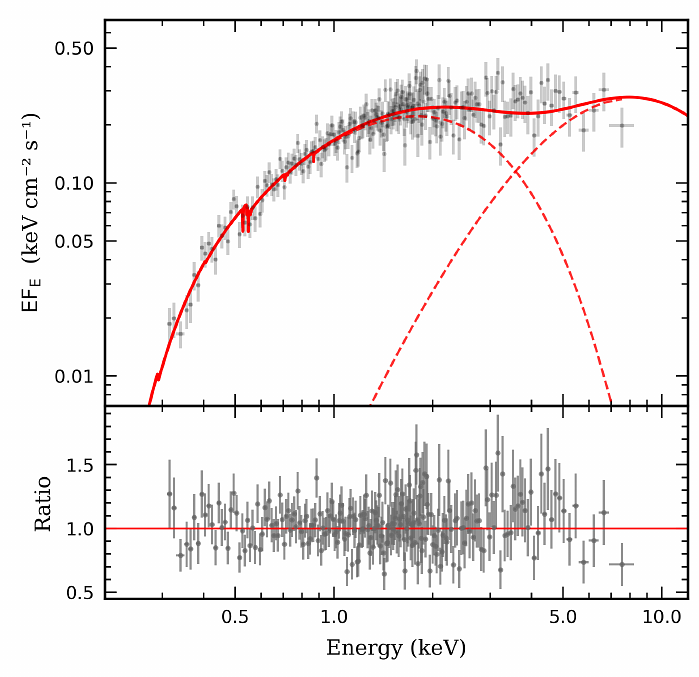NICER observations of type-I X-ray bursts from the ultra-compact X-ray binary M15 X-2

NICER observations of type-I X-ray bursts from the ultra-compact X-ray binary M15 X-2
María Alejandra Díaz Teodori Department of Physics at University of Turku and Nordic Optical Telescope, Jari J. E. Kajava Serco for European Space Astronomy Center, Celia Sánchez-Fernández ATG Europe for European Space Astronomy Center, Andrea Sanna Dipartimento di Fisica at Universitá degli Studi di Cagliari, Mason Ng Department of Physics at McGill University and Trottier Space Institute at McGill University, Juri Poutanen Department of Physics at University of Turku
AbstractType-I X-ray bursts are thermonuclear explosions caused by the unstable burning of accreted material on the surface of neutron stars. We report the detection of seven type-I X-ray bursts from the ultracompact X-ray binary M15 X-2 observed by the Neutron Star Interior Composition Explorer (NICER) during its 2022 outburst. We found all the bursts occurred in the soft state and exhibited similar light curve profiles, with no cases of photospheric radius expansion. Time-resolved spectroscopy showed clear deviations from the blackbody model during the first ten seconds of all the bursts. The fits were improved by using the enhanced persistent emission method, which we interpret as evidence of burst-disk interaction. We compared the performance of these models against a neutron star atmosphere model and found it made no significant improvements. After analyzing the burst rise times and fuel composition, we propose that these bursts were powered by the burning of pure helium, confirming the ultracompact nature of the source.